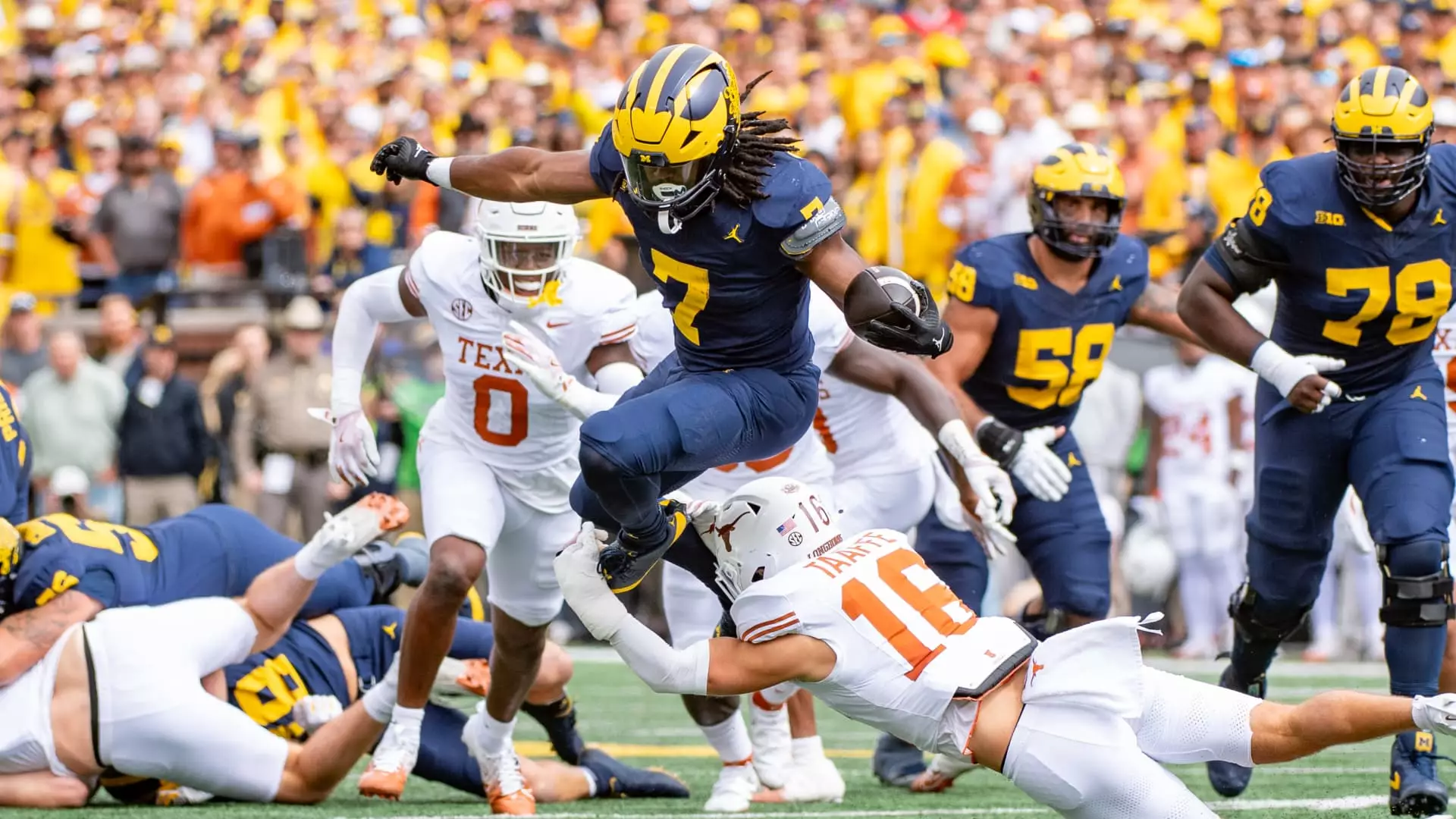The introduction of the expanded College Football Playoff format marks a transformative moment for not just college athletics, but also for media conglomerates. Disney, which oversees ABC, ESPN, and ESPN2, finds itself at the forefront of this change, poised to benefit from the new 12-team structure that was approved in 2022. This expansion has redefined the viewing landscape, igniting fan engagement and interest like never before. With more teams and greater competition, the 2023 season is shaping up to be a record-breaking year for viewership and advertising revenue.
In what has become a landmark season, Disney’s networks have seen a considerable uptick in viewership engagement. The recent data reveals that the 2023 season is on pace to emerge as the most-watched since 2016, highlighting the palpable excitement among fans. The expanded playoff format not only allows for more teams to participate, thereby generating greater fan interest, but also enhances the stakes of college football games throughout the season. Kevin Krim, CEO of EDO, an advertising analytics firm, suggests that this heightened significance leads to increased engagement with commercials during games. He advocates that the new format creates “higher hopes” for advertisers looking to capitalize on the visibility offered by college football.
Furthermore, many traditional rivalries are slated for the Thanksgiving weekend, a time when college football fans are typically glued to their screens. Long-standing rivalries—like Ohio State versus Michigan and Texas versus Texas A&M—are not just sports events; they are cultural phenomena that fuel further engagement in advertising efforts.
The statistics reflect an unparalleled demand for advertising slots during college football games on Disney’s networks. EDO’s analysis indicates that consumers exhibit an 11% higher inclination to engage with advertisements aired during college football broadcasts compared to the broader average for prime-time programming on other networks. These numbers become even more exhilarating when considering specific campaigns during peak viewing periods such as Thanksgiving. In fact, ads broadcast during college football games on Disney networks were 93% more effective than those on competing networks, showcasing the unique potential of live sports as a vehicle for advertisement.
Additionally, Jim Minnich, senior vice president at Disney, emphasized that the combination of expanded playoff format and the cultural significance of college football has resulted in “record breaking viewership” across the company’s platforms. His sentiment resonates strongly given that ABC is on track to experience its most successful season in college football ratings since 2009, with 12 out of 15 most-watched games airing on the network.
Given the strong performance metrics, it is no surprise that advertisers are lining up to secure spots on Disney broadcasts. Sought-after brands—including those from fast food, consumer packaged goods, and pharmaceuticals—are seeing favorable consumer engagement during broadcasts. Brands like Jimmy Dean, Just for Men, and AbbVie’s Skyrizi are making notable gains in visibility due to their strategic ad placements.
In a broader sense, this trend signifies a vital turning point in the advertising landscape, where sports, particularly college football, continue to be a coveted platform for delivering advertisements. As consumer behavior shifts, and with traditional pay-TV viewership declining, companies are focusing more on harnessing live sports events as key opportunities for targeting consumers.
As media companies grapple with the challenges posed by streaming platforms and shifting consumer dynamics, college football remains a critical asset in their portfolio. Disney’s strategy has already yielded “significant demand” from partners wanting to renew contracts for access to college football content, reflecting a renewed interest that is uncommon in today’s media landscape.
As multimedia rights become increasingly valuable, Disney faces escalating costs for securing broadcast rights. One report states that Disney has committed approximately $300 million annually for Southeastern Conference (SEC) rights over the next decade. Similarly, in March, ESPN forged a $7.8 billion agreement covering six years to maintain its grip on College Football Playoff rights.
Live sports continue to serve as the “last bastion” of solid ratings on television, with college football consistently ranking just behind the NFL in terms of viewer engagement and ad spending. The persistent success of college football amidst overall media turmoil signifies its importance as an advertising platform, prompting companies to adjust their resources and strategies accordingly. Krim of EDO asserts that college football not only thrives on Disney’s channels but outperforms average programming across competing networks.
As we evolve into an era marked by rapid change in media consumption, the expanded College Football Playoff is redefining engagement in ways we could not have imagined just a few years earlier. It acts as a crucial intersection where sports, entertainment, and advertising converge, creating a vibrant ecosystem that benefits all involved. With the appeal of college football clearly rising, it will be fascinating to monitor how media companies like Disney capitalize on this momentum in the years to come.

